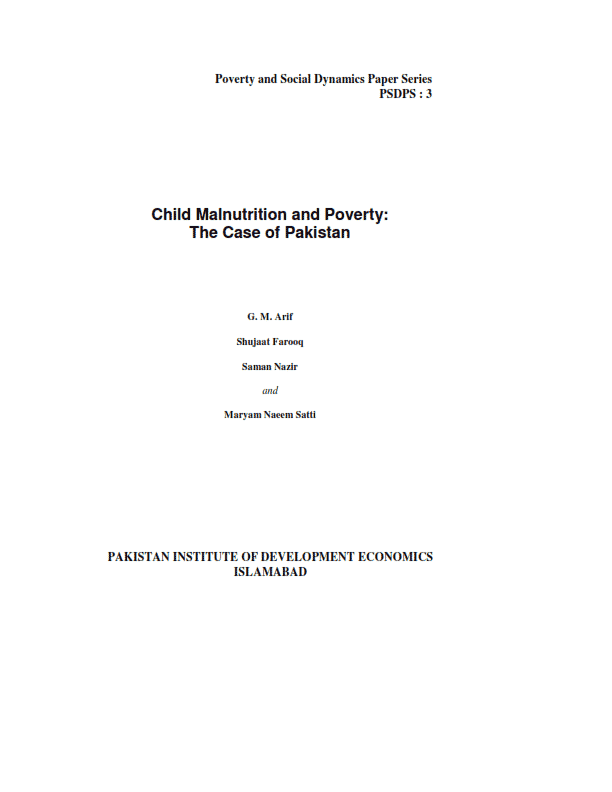
Pakistan Institute of Development Economics
- Home
Our Portals
MenuMenuMenuMenuMenuMenuMenu - ResearchMenuMenuMenuMenuMenuMenuMenu
- Discourse
- The PDR
- Our Researchers
- Academics
- Degree Verification
- Thesis Portal
- Our Portals
Child Malnutrition and Poverty: The Case of Pakistan (Paper Series PSDPS : 3)
The role of economic factors—particularly income and consumption—in the wellbeing of a population is well documented. However, wellbeing does not depend solely on these factors; social indicators such as life expectancy, health, education, and nutrition serve an important complementary function [Linnemayr, et al. (2008)]. The most significant social problems in many developing countries, including Pakistan, include widespread child malnutrition, high infant mortality, and low literacy. Child malnutrition is considered the key risk factor for illness and death, contributing to more than half the deaths of children globally [Cheah, et al. (2010)]. It also affects the child morbidity rate and poses a threat to children’s physical and mental development, in turn lowering their educational attainment [Chirwa and Ngalawa (2008)]. The recent literature, therefore, considers nutrition an important dimension of individual wellbeing [Babatunde, Olagunju, and Fakayode (2011)].



